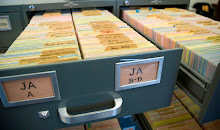Record Content: Recipient
<recipient>
Most records consist of an author and a recipient. The author is loosely defined as any text before the first instance of the word "to." The recipient, then, is any text following the first instance of the word "to." The vendor was instructed to include all text following "to" in the recipient tag. Frequently, the text following a recipient’s name includes statements about content, enclosures or references to other letters. During Encoding Level 2, these other elements will be separately tagged. The recipient element includes the same child elements as the author element, that is, <person>, <corporate>, and <office>. The same guidelines and rules apply to these child elements as in the author element (see above). In addition there are three child elements may also be used in <recipient>.
<enclosure>
A letter often includes enclosures. The text of the record will expressly state that an "enclosure" is included. These may also contain a target reference to another letter and there may be multiple references. These are tagged with <ref @target>.
<content>
Similar to an enclosure statement, the recipient text block may also include a note regarding content. This is a child element of the recipient element.
<ref>
There may also appear miscellaneous references to other documents or persons that can be tagged with a <ref> tag with a target to a separate directory or separate document.
Example:
<recipient>to <person target="washingtongeorge">George Washington</person>: <content>Opinion re salaries of American diplomats,</content> with several <enclosure>enclosures (in which are found, on p. 9-10, copy of <ref target="000000">JA to John Jay, 13 May 1785,</ref> & on p. 10, copy of <ref target="00000"> John Jay to JA, 3 Aug. 1785)</ref></enclosure></recipient>
Subscribe to:
Post Comments (Atom)

No comments:
Post a Comment